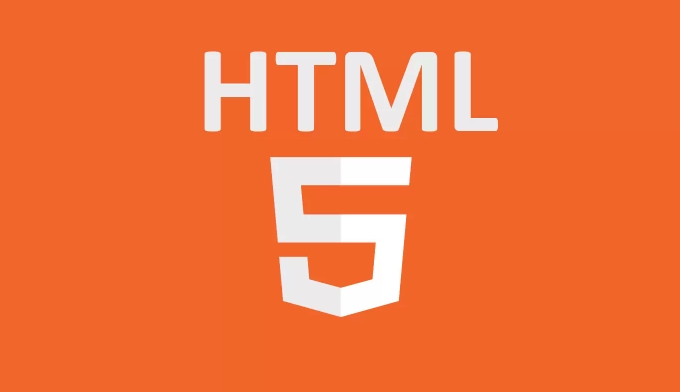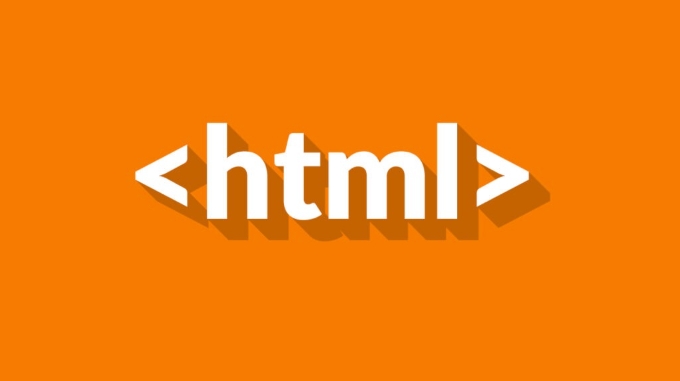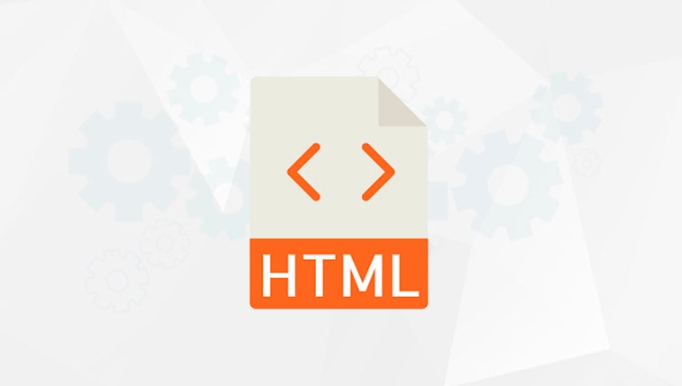HTML5 Web Storage is a client storage mechanism that includes localStorage and sessionStorage, the former persists storage, and the latter is only valid during sessions. It has a larger capacity and does not send data with requests, and is suitable for remembering user preferences, form staging, lightweight authentication, and cross-page communication. When using it, you should be careful to only store strings, no automatic expiration mechanism, synchronization operations may affect performance, and subdomain names do not share data. It is recommended to store sensitive information on the server or HttpOnly cookies.

Do you often encounter situations where you need to temporarily store some data in your browser? For example, remember the user's login status, save some preferences, and don't want to use cookies, which is an old way of doing it? HTML5's Web Storage was created to solve this problem.

What is HTML5 Web Storage?
Web Storage is a client storage mechanism provided by HTML5, which mainly includes two types: localStorage and sessionStorage . They all store data in the form of key-value pairs in the browser, but there is one key difference:
- localStorage : The data will be saved all the time unless the browser cache is manually cleared.
- sessionStorage : Only valid during the current session, data will be cleared after closing the page or browser.
Compared with cookies, Web Storage has a larger capacity (generally about 5MB per domain name), and it will not be sent to the server with each request, reducing the burden on the network.

How to use Web Storage to access data?
It is actually very simple to use, basically it is a matter of calling several methods. For example, if you want to store the user's username locally, you can write it like this:
localStorage.setItem('username', 'john_doe');
When you want to read this value later:

let name = localStorage.getItem('username'); console.log(name); // Output john_doe
If you want to delete a certain data:
localStorage.removeItem('username');
If you want to clear all data:
localStorage.clear();
These methods also apply to sessionStorage , but the life cycle is different.
It should be noted that Web Storage can only store strings. If you want to save objects or arrays, you have to use JSON.stringify() to convert them first:
let user = { name: 'john_doe', age: 25 };
localStorage.setItem('user', JSON.stringify(user));When taken out, analyze it back:
let userData = JSON.parse(localStorage.getItem('user'));
Which scenarios are suitable for Web Storage?
- Remember user preferences : such as website theme, font size, etc., and you don’t need to let the user re-select each time.
- Form data temporary storage : The user accidentally refreshes the page after filling in half of the content. You can use
sessionStorageto restore the previous content. - Lightweight authentication information : For example, JWT token, although it is not recommended to place
localStoragefor a long time (because of XSS attack risks), it is still common in some front-end and back-end separation projects. - Cross-page communication : By listening to
storageevents, simple messages can be passed between multiple tabs.
For example, when you are working on a to-do application, the tasks added by the user can temporarily exist in localStorage , and the page will not be lost even if it is refreshed.
What should I pay attention to?
Although Web Storage is very convenient, there are some "pits" to pay attention to:
- IE8 and below versions are not supported, but no one should use them now, right?
- The stored data can only be strings, and complex structures have to handle serialization and deserialization by themselves.
- Data cannot expire automatically, unlike cookies that can set
expiresattribute. - All operations are synchronized, and large data operations may affect performance.
- Data between different subdomains is not shared, for example,
a.example.comandb.example.comeach have their own storage space.
If your application has high security requirements, such as user-sensitive information, it is recommended to place it in HttpOnly cookies or servers.
Basically that's it. Web Storage is not complicated but is easy to ignore details, especially data formats and security aspects. Mastering it well can improve your front-end experience a lot.
The above is the detailed content of Client-Side Storage with HTML5 Web Storage. For more information, please follow other related articles on the PHP Chinese website!

Hot AI Tools

Undress AI Tool
Undress images for free

Undresser.AI Undress
AI-powered app for creating realistic nude photos

AI Clothes Remover
Online AI tool for removing clothes from photos.

Clothoff.io
AI clothes remover

Video Face Swap
Swap faces in any video effortlessly with our completely free AI face swap tool!

Hot Article

Hot Tools

Notepad++7.3.1
Easy-to-use and free code editor

SublimeText3 Chinese version
Chinese version, very easy to use

Zend Studio 13.0.1
Powerful PHP integrated development environment

Dreamweaver CS6
Visual web development tools

SublimeText3 Mac version
God-level code editing software (SublimeText3)
 Applying Semantic Structure with article, section, and aside in HTML
Jul 05, 2025 am 02:03 AM
Applying Semantic Structure with article, section, and aside in HTML
Jul 05, 2025 am 02:03 AM
The rational use of semantic tags in HTML can improve page structure clarity, accessibility and SEO effects. 1. Used for independent content blocks, such as blog posts or comments, it must be self-contained; 2. Used for classification related content, usually including titles, and is suitable for different modules of the page; 3. Used for auxiliary information related to the main content but not core, such as sidebar recommendations or author profiles. In actual development, labels should be combined and other, avoid excessive nesting, keep the structure simple, and verify the rationality of the structure through developer tools.
 Implementing Clickable Buttons Using the HTML button Element
Jul 07, 2025 am 02:31 AM
Implementing Clickable Buttons Using the HTML button Element
Jul 07, 2025 am 02:31 AM
To use HTML button elements to achieve clickable buttons, you must first master its basic usage and common precautions. 1. Create buttons with tags and define behaviors through type attributes (such as button, submit, reset), which is submitted by default; 2. Add interactive functions through JavaScript, which can be written inline or bind event listeners through ID to improve maintenance; 3. Use CSS to customize styles, including background color, border, rounded corners and hover/active status effects to enhance user experience; 4. Pay attention to common problems: make sure that the disabled attribute is not enabled, JS events are correctly bound, layout occlusion, and use the help of developer tools to troubleshoot exceptions. Master this
 Configuring Document Metadata Within the HTML head Element
Jul 09, 2025 am 02:30 AM
Configuring Document Metadata Within the HTML head Element
Jul 09, 2025 am 02:30 AM
Metadata in HTMLhead is crucial for SEO, social sharing, and browser behavior. 1. Set the page title and description, use and keep it concise and unique; 2. Add OpenGraph and Twitter card information to optimize social sharing effects, pay attention to the image size and use debugging tools to test; 3. Define the character set and viewport settings to ensure multi-language support is adapted to the mobile terminal; 4. Optional tags such as author copyright, robots control and canonical prevent duplicate content should also be configured reasonably.
 Best HTML tutorial for beginners in 2025
Jul 08, 2025 am 12:25 AM
Best HTML tutorial for beginners in 2025
Jul 08, 2025 am 12:25 AM
TolearnHTMLin2025,chooseatutorialthatbalanceshands-onpracticewithmodernstandardsandintegratesCSSandJavaScriptbasics.1.Prioritizehands-onlearningwithstep-by-stepprojectslikebuildingapersonalprofileorbloglayout.2.EnsureitcoversmodernHTMLelementssuchas,
 How to associate captions with images or media using the html figure and figcaption elements?
Jul 07, 2025 am 02:30 AM
How to associate captions with images or media using the html figure and figcaption elements?
Jul 07, 2025 am 02:30 AM
Using HTML sums allows for intuitive and semantic clarity to add caption text to images or media. 1. Used to wrap independent media content, such as pictures, videos or code blocks; 2. It is placed as its explanatory text, and can be located above or below the media; 3. They not only improve the clarity of the page structure, but also enhance accessibility and SEO effect; 4. When using it, you should pay attention to avoid abuse, and apply to content that needs to be emphasized and accompanied by description, rather than ordinary decorative pictures; 5. The alt attribute that cannot be ignored, which is different from figcaption; 6. The figcaption is flexible and can be placed at the top or bottom of the figure as needed. Using these two tags correctly helps to build semantic and easy to understand web content.
 HTML for email templates tutorial
Jul 10, 2025 pm 02:01 PM
HTML for email templates tutorial
Jul 10, 2025 pm 02:01 PM
How to make HTML mail templates with good compatibility? First, you need to build a structure with tables to avoid using div flex or grid layout; secondly, all styles must be inlined and cannot rely on external CSS; then the picture should be added with alt description and use a public URL, and the buttons should be simulated with a table or td with background color; finally, you must test and adjust the details on multiple clients.
 What are the most commonly used global attributes in html?
Jul 10, 2025 am 10:58 AM
What are the most commonly used global attributes in html?
Jul 10, 2025 am 10:58 AM
class, id, style, data-, and title are the most commonly used global attributes in HTML. class is used to specify one or more class names to facilitate style setting and JavaScript operations; id provides unique identifiers for elements, suitable for anchor jumps and JavaScript control; style allows for inline styles to be added, suitable for temporary debugging but not recommended for large-scale use; data-properties are used to store custom data, which is convenient for front-end and back-end interaction; title is used to add mouseover prompts, but its style and behavior are limited by the browser. Reasonable selection of these attributes can improve development efficiency and user experience.
 How to handle forms submission in HTML without a server?
Jul 09, 2025 am 01:14 AM
How to handle forms submission in HTML without a server?
Jul 09, 2025 am 01:14 AM
When there is no backend server, HTML form submission can still be processed through front-end technology or third-party services. Specific methods include: 1. Use JavaScript to intercept form submissions to achieve input verification and user feedback, but the data will not be persisted; 2. Use third-party serverless form services such as Formspree to collect data and provide email notification and redirection functions; 3. Use localStorage to store temporary client data, which is suitable for saving user preferences or managing single-page application status, but is not suitable for long-term storage of sensitive information.






